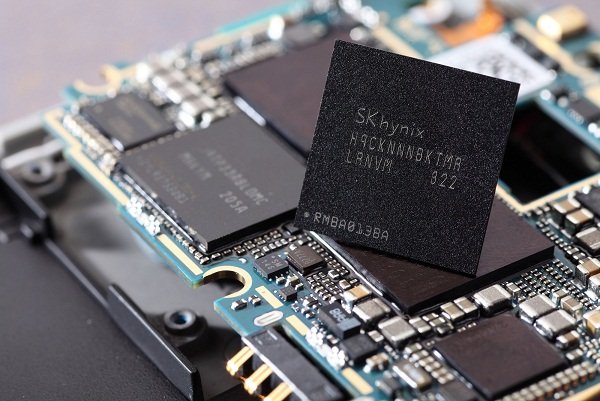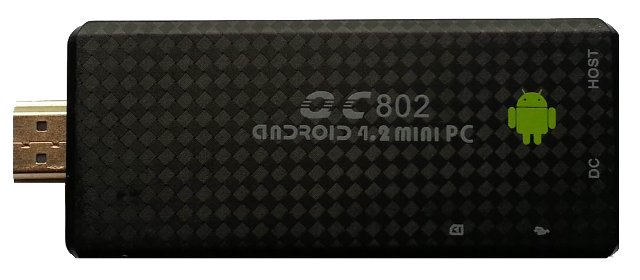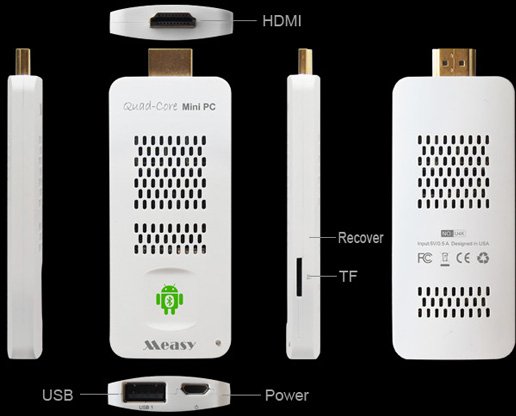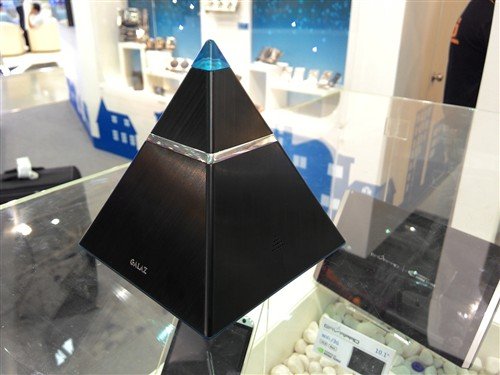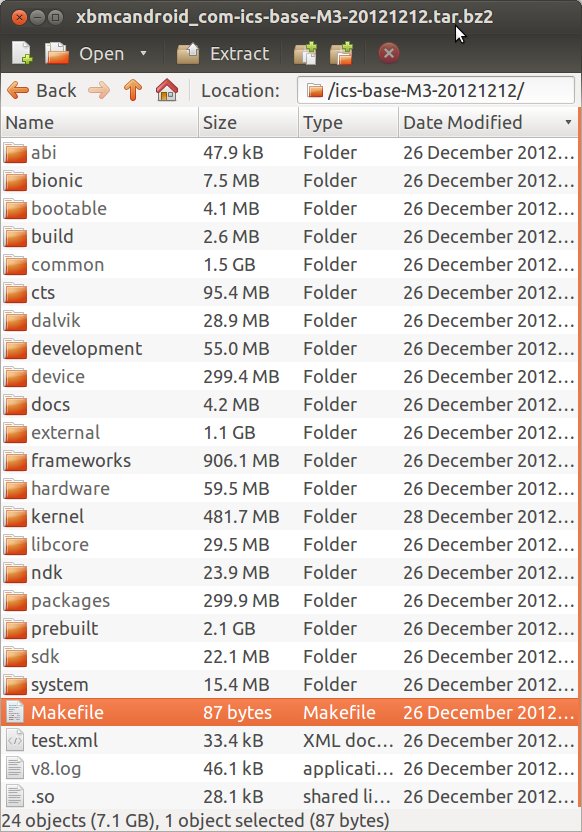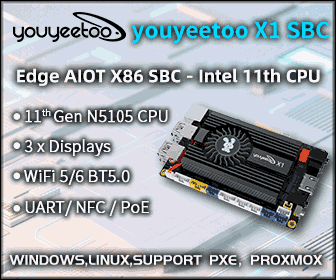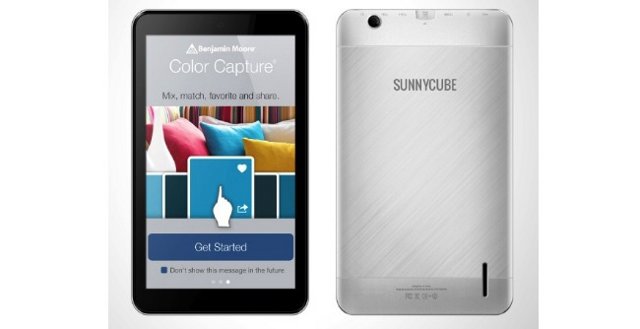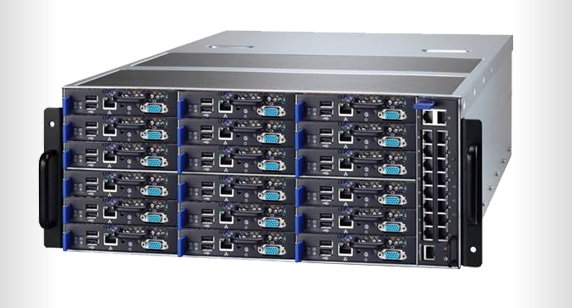More and more devices this year come with 2GB RAM in 4x 4Gbit configuration, and this is about the limit today because there aren’t 8Gbit (1GB) mobile RAM chipset available. This is about the change as Hynix has just announced they have developed 8Gbit LPDDR3 based on 20nm process technology. Hynix new memory can be stacked up to provide 4GB (Gigabyte) in a single package that can be provided as ‘PoP’ (Package on Package), or the memory can be bundled with eMMC. Existing LPDDR3 chipsets work at up to 1600Mbps, but Hynix memory will be able to achieve 2133Mbps data transmission speed, an increase of about 33 percent. That means it can process up to 8.5GB of data per second in a single channel, and 17GB in a dual channel using 32-bit I/O. Samples have already been shipped to customers, mass production should start at the end of this year, […]
Rockchip RK3188 Based QC802 mini PC Can Now Be Purchased for $65
When Rockchip RK3188 powered mini PC started to show up in March 2013, many were priced around $90, which some shops aggressively (and temporarily) pricing UG007B at $74. But it’s now possible to purchase QC802, a quad core mini PC with 2GB RAM and 8GB Flash, for just $61.75 excluding shipping from a seller with good feedback. Adding shipping will bring it to about $70 depending where you live, but applying “registernewbuyer5” coupon brings it back to $65 or even a bit less. QC802 is by far the cheap RK3188 device I’ve found. Just a quick reminder of the specs: SoC – Rockchip RK3188 quad core Cortex A9 @ 1.6 Ghz + Mali-400MP4 GPU System Memory – 2GB DDR3 Storage – 8 GB internal flash + micro SD slot (up to 32GB) Connectivity – Wi-Fi 802.11 b/g/n + Bluetooth 2.1 Video Output – HDMI (male) USB – 1x USB Host […]
Quick 3D Game Performance Comparison – Rockchip RK3188 vs AllWinner A31 HDMI TV Sticks
When comparing SoCs, most like to look at the overall score, and as I mentioned this morning, Tronsmart T428 (based on RK3188) easily beats Kimdecent CS868 (Based on A31) in Antutu benchmark, the former scoring 15207 points against 10559 points for the latter, both using stock firmware, and similar resolution (1280×720 vs 1280×672). The difference in resolution is because the status bar was hidden in T428. If we look at GPU performance, both the 3D scores in Antutu are about the same for both devices: T428 CS868 2D Graphics 1549 998 3D Graphics 2696 2866 But according to an earlier GPU comparison post, PowerVR SGX544 MP2 should be much faster than Mali-400 MP4. So I’ve decided to perform two quick tests: Epic Citadel benchmark and Real Racing 3 game. T428 could render Epic Citadel 1.07 at 41.3 fps in high quality, but I failed to install Epic Citadel, either via […]
Measy U4K – AllWinner A31 Powered Mini PC for 4K2K Video Playback
Apart from CS868, I had not seen other HDMI TV sticks based on AllWinner A31, the main reason being the performance to price ratio, with RK3188 devices cheaper than AllWinner A31 ones, and benchmarks such as Antutu showing better score for RK3188. 2D/3D performance is about the same as RK3188 (based on Antutu benchmark), despite A31’s PowerVR SGX544 MP2 GPU. So the only remaining advantage of A31 over RK3188 is 4K2K (UHD) video playback, which is probably why Measy called their A31 mini PC “Measy U4K”. Measy U4K Specifications: SoC – Allwinner A31 quad-core cortex A7 @ 1.0GHz + PowerVR SGX544MP2 GPU System Memory – 2GB dual channel 64-bit DDR3 Storage – 8GB Nand dual channel 16-bit Flash + micro SD card slot (Up to 32 GB) Connectivity – Wi-Fi 802.11 b/g/n (Ralink8188) + Bluetooth 4.0 USB – 1x micro USB OTG for power, and 1x USB 2.0 host Video Output […]
Galapad Galaz is a Pyramidal Set-top Box
Up to now, the set-top box with the most innovative or weird design, depending on who you ask, was certainly Tronsmart Prometheus with its spaceship-like casing. Another Chinese company called Galapad may have gone a bit further with a device shaped like a pyramid with blue lights at the top and bottom. We don’t know much details about this media player, except it comes with HDMI output, RJ45 and mini USB connectors, an audio jack, and a microSD card. The company’s other designs (all tablets) are based on Nvidia Tegra SoCs, so it’s likely this one, if it’s ever sold, will also feature Nvidia Tegra 3 or 4 processor. Via AndroidPC.es and PCPop
Geniatech Releases ATV510B Source Code, Teases Dual and Quad Core ATV130 and ATV180 mini PCs
XBMCHUB (not affiliated with XBMC) reports that Geniatech has released the Android and Linux source code for ATV510B, one of Geniatech set-top boxes based on AML8726-M3 Cortex A9 processor. ATV510B is the design used by devices such as Pivos XIOS DS, Jynxbox Android HD, Sumvision Cyclone Nano M3, and MyGica ATV510B Enjoy TV Nano 3, among others. Pivos has made U-boot, Linux and XBMC source code available in github for a little while now, but this new release is a pretty large file (2.39 GB) called xbmcandroid_com-ics-base-M3-20121212.tar.bz2 that includes Android 4.0 source including the kernel and the bootloader. This source code should work with “stvmc” hardware, as found in build.prop’s ro.product.name or ro.product.device keys. I haven’t looked into details, but here’s the content of the root directory of the archive: On a separate note, Geniatech also showed the picture below on their Facebook page, with 2 new Android TV Sticks: […]
WM8880-MID Dual Core Tablet is Now Available for $59
Remember SunnyCube V7 tablet with a dual core Cortex A9 SoC available for just $40 in China? I had a target between $50 to $55 on Aliexpress, but I’ve been explained I may have been too optimistic with shipping fees and the 5% seller fee in Aliexpress platform. Nevertheless, the device, or a similar device, based on WonderMedia WM8880 is now available for $59 including shipping on GeekBuying, which puts it in slightly higher price (~$7 more) than AllWinner A13 tablets, but with much more processing power, and HDMI output. Here are some updated specs: SoC – VIA WM8880 Dual core Cortex A9 processor @ 1.5GHz + Mali-400 MP2 GPU System Memory – 512MB DDR3 Storage – 4GB Flash + micro SD slot Display – 7-inch WVGA (800×480) display Video Output – HDMI port Video Playback – H.264, WMV, MPEG2/4, VP8 (up to 1080p) Connectivity – Wi-Fi 802.11 b/g Camera […]
MiTAC Announces 7-Star 64-Bit ARM Server Powered by Applied Micro X-Gene Server-on-Chip
After unveiling their GFX servers based on Marvell ARM Cortex A9 SoC at Computex 2012, Mitac announced their new 7-Star server at Computex 2013. This new server is based on Applied Micro X-Gene SoC featuring ARMv8 architecture, and is one of the first, if not the first, 64-Bit ARM server ever. The key features of Mitac Server are as follows: 18x Front-loaded Computing Blades in 4U (176mm x 440mm x 650mm) Server Blade Spec SSI uModule v1.0 complaint (1) ARMv8 compliant 64-bit SoC /blade (2) DDR3 DIMM slots, and (2) 2.5” SATA 3.0 HDD support (1) 10G SFP+ and (1) GbE port IPMI V2.0 compliant Pass-through Ethernet Module Chassis Management Hot-swap FAN and (2+1) RPSU support It will be available by the end of the year. That’s about all I know for now, but more information should eventually come up on Mitac 7-Star page. Via PC Perspective.


